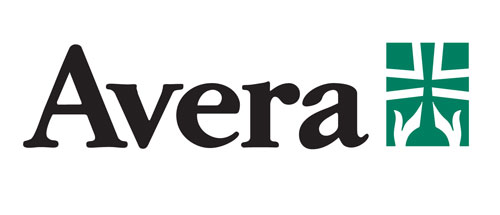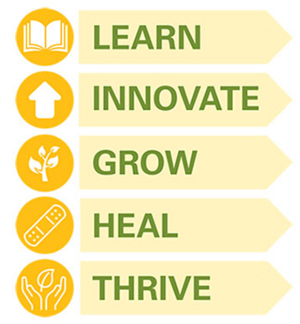Avera LIGHT
- Need: Assistance for urban and rural physicians — as well as other healthcare providers — who are experiencing burnout and other issues associated with well-being.
- Intervention: As part of its provider well-being focus in its rural and urban facilities, Avera Health system has created a program which attends to physician wellness issues starting with recruitment with continued support through retirement.
- Results: With increasing engagement due to word of mouth, the program creates a culture of wellness where stigma is decreased and providers are encouraged to be proactive in reaching out for assistance for issues related to their personal and professional well-being.
Description

 Burnout,
as described by the World Health Organization, is a
"phenomena in the occupational context and should not be
applied to describe experiences in other areas of life."
Burnout,
as described by the World Health Organization, is a
"phenomena in the occupational context and should not be
applied to describe experiences in other areas of life."
Researchers have defined burnout as "emotional exhaustion, depersonalization, and reduced personal accomplishment" due to one's job. Results from a 2017 survey indicated that physician burnout registered at 42.7% compared to 28% in the general population. Of additional concern is data that indicates depression is increasing among physicians, making experts further concerned about an increase in suicidal ideation that often accompanies depression.
Avera Health is a large healthcare system in a 5-state region in the Great Plains and Midwest. Nearly half of its hospitals, clinics, and providers are in rural areas. The organization began to formally address burnout and other linked issues associated with provider well-being in 2012 with a dedicated program separate from their employee assistance program. Originally called Avera LIGHT for Live, Improve, Grow, Health, and Treat, a mindful change was made in 2021 to update the acronyms to Learn, Innovate, Grow, Heal, and Thrive.

In addition to new acronyms, the program added a new interdisciplinary structure: creation of a LIGHT Committee which includes the organization's CMO, the LIGHT program director, a team member from Human Resources, and a Family Medicine physician. Teams are created and further assigned to Culture of Wellness, Efficiency of Practice, and Personal Resiliency in order to developing programing and strategies to prevent burnout.
The program uses the Stanford Model to address Professional Fulfillment and offers specialized assistance to the organization's physicians, physician assistants, and nurse practitioners. An essential part of the program is its mind-body-spirit approach which is part of Avera's healthcare delivery mission. A program goal is to have a LIGHT champion in each of the 5 regions who may be either a clinician or non-clinical employee.
During the program's start-up, it addressed more acute issues. As a pilot site for AMA's burnout inventory conducted in October of 2016, it was able to identify burnout-related stress points within the practice. Today's program has matured into a program that not only works proactively on prevention and early identification of burnout or other wellness issues, but focuses on provider well-being from recruitment to retirement. Because of the latter focus, the program has provided value as a recruitment and retention tool, especially for its rural facilities with their built-in recruitment and retention challenges.
Building on the organization's extensive experience in telemedicine and telehealth, Avera LIGHT is offered to its rural providers on desktop, mobile device, or phone when face-to-face meetings can't occur. However, the LIGHT program makes it a priority to connect face-to-face with the providers in those facilities outside its Sioux Falls hub, an essential trust-building step.
The program is funded as a line-item in the operating budget. Its current staffing model includes a part-time physician medical director and a full-time licensed counselor who is also an executive coach. As of Fall 2019, a program manager has been added. LIGHT is offered to resident physicians in the organization's training programs.
Services offered
- Well-being survey to pinpoint high need areas
- Well-being/LIGHT focus for physician and advanced practice provider leadership development programs
- Burnout Basics and Burnout Power Tools
- Mind, body, spirit approach consistent with the organization's mission
- "Safe zone" for distressed physicians: tactical approach rather than punitive
- Consultation for administrators and human resources professionals regarding challenging behaviors, change, conflict, and resources
-
Executive coaching: Individualized
sessions focus on topic of choice. Some examples
include: all aspects of well-being, including how to
reduce hours at work, colleague communications, and
dealing with parent guilt often brought on from long
call hours. The program's confidential services are
designed to help providers strategize ways to reach
personal and career satisfaction.
- Coaching for rural locations can be provided via Avera's telehealth, desktop or mobile device
- Peer strategy coaching
Retreats and Meetings:
- Continuing Medical Education offerings
- Retreats
- Spouse engagement group
- Women in Medicine Retreat
- Schwartz rounds: a group meeting offered to the Sioux Falls region over the lunch hour which allows all employee and provider attendees to meet and discuss the emotional and social aspects of working in healthcare.
Results
- Physician turnover/attrition rate of 3-4% compared to a national rate of 7%
- Schwartz rounds: consistently over 100 attendees per session
- Fiscal year 2019: Program director provided over 200 sessions, 75% for physicians
- Initial provider reluctance to engage with the program has been largely replaced by confidence that the Avera LIGHT program is a stigma-free safe platform for providers to talk about burnout and other wellness issues. Increased provider word-of-mouth is likely one source of increased engagement as the program continues with its mission.
- To read further about how Avera LIGHT is addressing
physician burnout:
- Physician Burnout: Definition(s), Cause(s), Impact(s), Solution(s). The Rural Monitor, 2020.
- Avera Health program helps prevent physician burnout, build resilience, Catholic Health Association of the United States, 2017
-
This program video was created by the Catholic Healthcare Association:
Challenges
- Solutions to the challenges with distance between Avera's Sioux Falls headquarters and their rural clinics continue to be addressed.
- Electronic health records have been a leading cause of early retirement and physician burnout among Avera physicians in the past. Re-evaluation and modification of this and other pressure point occurs driven by results of routine surveys.
Replication
- Gather a physician focus group to brainstorm about issues and solutions for burnout.
- Survey facility physicians to uncover the practice pressure areas in order to tailor solutions to these needs.
- Create an implementation timeline with delegated tasks and a clear deadline.
- Acknowledge that teamwork is essential. Avoid attempting to solve too many issues too quickly. Start small and build on what has already proven successful.
- Leadership at the top of the organization is essential. Designate an administrative champion for ongoing support of program and budget.
Contact Information
Megan Bartel, LSW, Avera LIGHT Program DirectorAvera Medical Group
Avera Health Light Provider Wellness Program
605.322.4411
Topics
Behavioral health
Health screening
Nurse practitioners and other advanced practice registered nurses
Physician assistants
Physicians
Recruitment and retention of health professionals
States served
Iowa, Minnesota, Nebraska, North Dakota, South Dakota
Date added
January 4, 2016
Date updated or reviewed
March 26, 2021
Suggested citation: Rural Health Information Hub, 2021. Avera LIGHT [online]. Rural Health Information Hub. Available at: https://www.ruralhealthinfo.org/project-examples/876 [Accessed 25 April 2024]
Please contact the models and innovations contact directly for the most complete and current information about this program. Summaries of models and innovations are provided by RHIhub for your convenience. The programs described are not endorsed by RHIhub or by the Federal Office of Rural Health Policy. Each rural community should consider whether a particular project or approach is a good match for their community’s needs and capacity. While it is sometimes possible to adapt program components to match your resources, keep in mind that changes to the program design may impact results.
